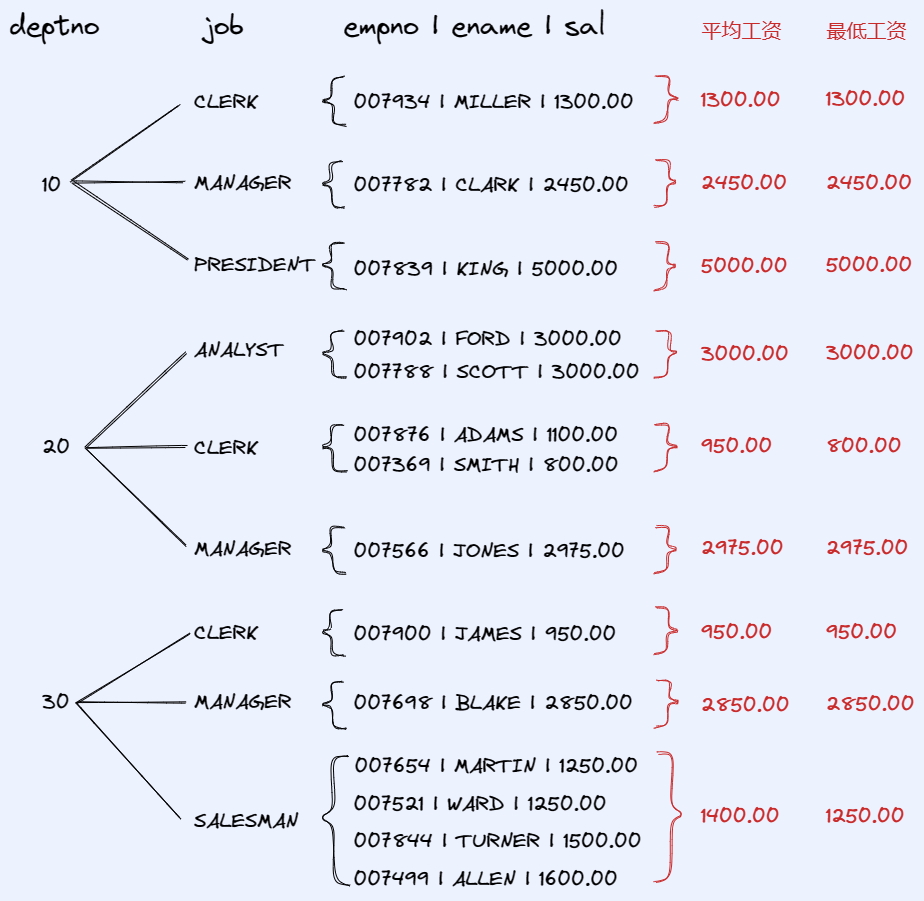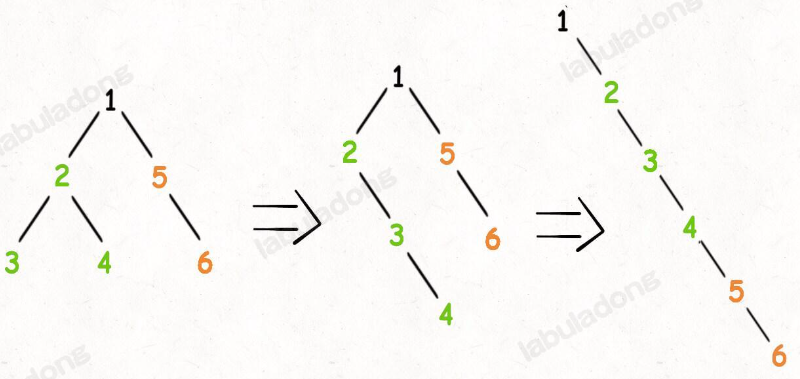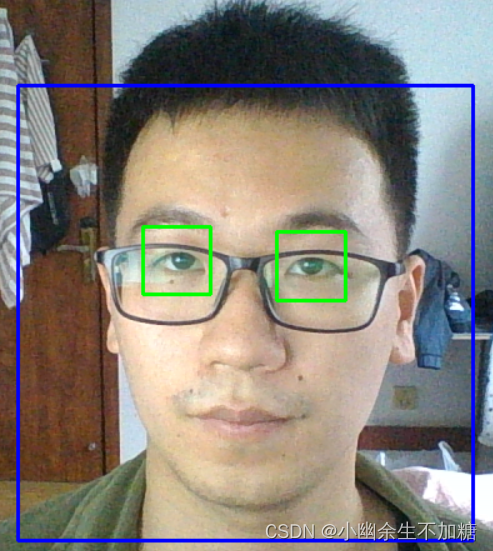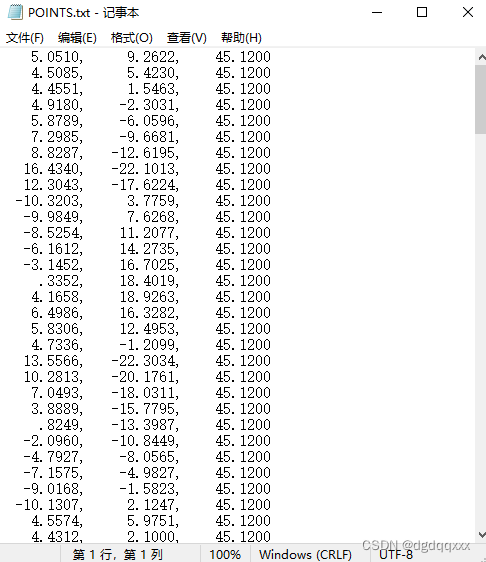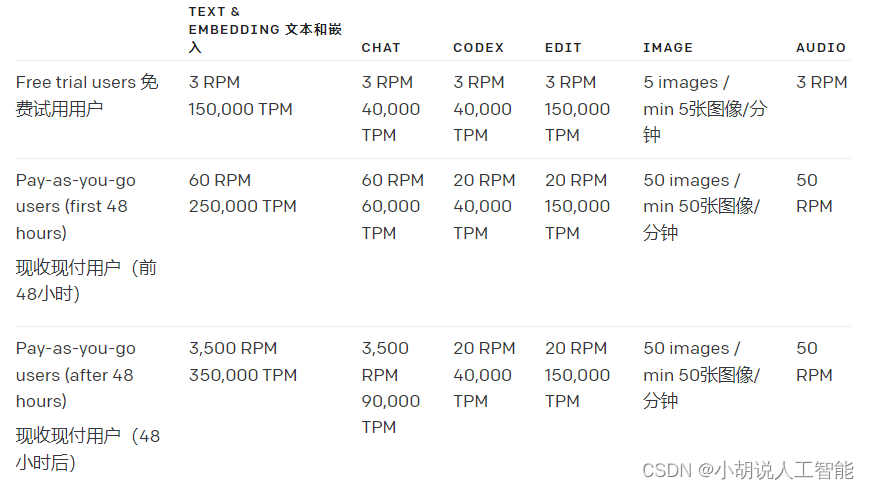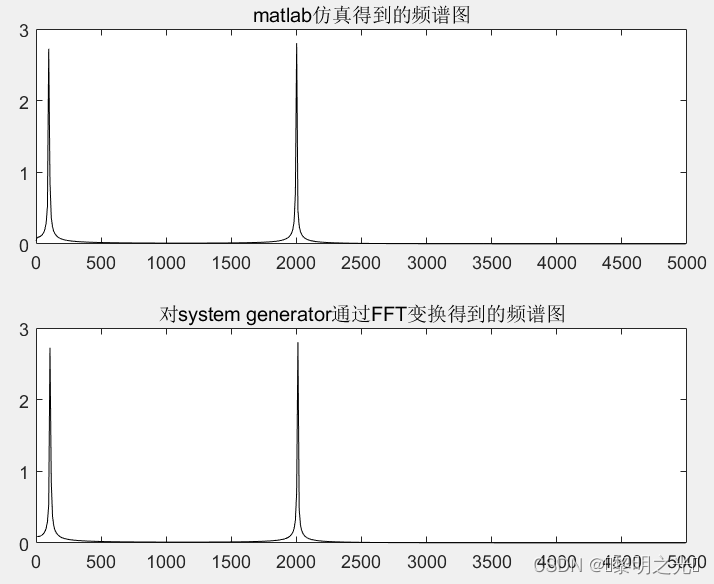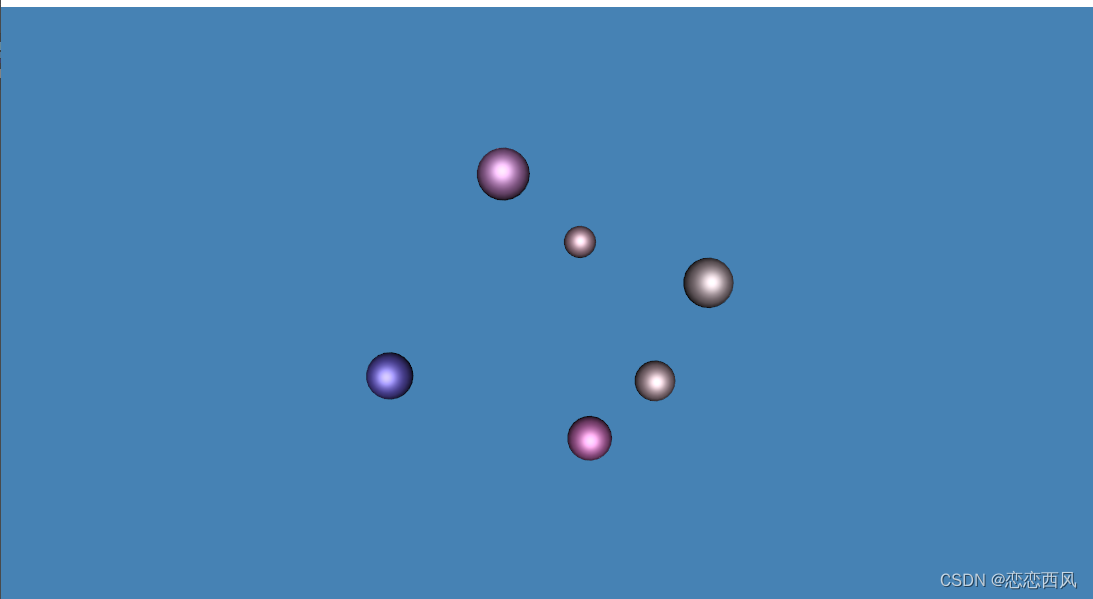结构体
文章目录
- 结构体
- 前言
- 1 结构体基本概念
- 2 结构体定义和使用
- 3 结构体数组
- 4 结构体指针
- 5 结构体嵌套结构体
- 6 结构体做函数参数
- 7 结构体中 const 使用场景
- 8 结构体案例
- 8.1 案例一
- 8.2 案例二
- 总结
前言
本文包含结构体基本概念、结构体定义和使用、结构体数组、结构体指针、结构体嵌套结构体、结构体做函数参数、结构体中 const 使用场景。
1 结构体基本概念
结构体属于用户 自定义的数据类型,允许用户存储不同的数据类型
2 结构体定义和使用
语法: struct 结构体名 { 结构体成员列表 };
通过结构体创建变量的方式有三种:
(1)、struct 结构体名 变量名
(2)、struct 结构体名 变量名 = { 成员1值 , 成员2值…}
(3)、定义结构体时顺便创建变量
#include <iostream> // 包含标准输入输出流文件
using namespace std; // 使用标准命名空间
// 结构体定义
struct student
{
// 成员列表
string name; // 姓名
int age; // 年龄
int score; // 分数
}stu3; // 结构体变量创建方式3:在定义结构体时顺便创建结构体变量
int main() {
// 结构体变量创建方式1:struct student stu1
struct student stu1; // struct 关键字可以省略
stu1.name = "张三"; // 通过.访问结构体变量中的属性
stu1.age = 18;
stu1.score = 100;
cout << "姓名:" << stu1.name << " 年龄:" << stu1.age << " 分数:" << stu1.score << endl;
// 结构体变量创建方式2:struct student stu2 = {...}
struct student stu2 = { "李四",19,60 };
cout << "姓名:" << stu2.name << " 年龄:" << stu2.age << " 分数:" << stu2.score << endl;
// 结构体变量创建方式3:在定义结构体时顺便创建结构体变量
stu3.name = "王五";
stu3.age = 18;
stu3.score = 80;
cout << "姓名:" << stu3.name << " 年龄:" << stu3.age << " 分数:" << stu3.score << endl;
system("pause"); // 相当于在本地 Windows 调试器中的:请按任意键继续...;暂停,方便看清楚输出结果
return 0; // 程序正常退出
}

3 结构体数组
作用: 将自定义的结构体放入到数组中方便维护
语法: struct 结构体名 数组名[元素个数] = { {} , {} , ... {} }
#include <iostream> // 包含标准输入输出流文件
using namespace std; // 使用标准命名空间
// 结构体定义
struct student
{
// 成员列表
string name; // 姓名
int age; // 年龄
int score; // 分数
};
int main() {
// 结构体数组
struct student arr[3] =
{
{"张三",18,80 },
{"李四",19,60 },
{"王五",20,70 }
};
arr[2].name = "赵六"; // 可以修改值
arr[2].age = 90;
arr[2].score = 3;
for (int i = 0; i < 3; i++)
{
cout << "姓名:" << arr[i].name << " 年龄:" << arr[i].age << " 分数:" << arr[i].score << endl;
}
system("pause"); // 相当于在本地 Windows 调试器中的:请按任意键继续...;暂停,方便看清楚输出结果
return 0; // 程序正常退出
}

4 结构体指针
作用: 通过指针访问结构体中的成员
- 利用操作符
->可以通过结构体指针访问结构体属性
#include <iostream> // 包含标准输入输出流文件
using namespace std; // 使用标准命名空间
// 结构体定义
struct student
{
// 成员列表
string name; // 姓名
int age; // 年龄
int score; // 分数
};
int main() {
struct student stu = { "张三",18,100, };
struct student* p = &stu; // 指针为student类型
p->score = 80; // 指针通过 -> 操作符可以访问成员
cout << "姓名:" << p->name << " 年龄:" << p->age << " 分数:" << p->score << endl;
system("pause"); // 相当于在本地 Windows 调试器中的:请按任意键继续...;暂停,方便看清楚输出结果
return 0; // 程序正常退出
}

5 结构体嵌套结构体
作用: 结构体中的成员可以是另一个结构体
例如: 每个老师辅导一个学员,一个老师的结构体中,记录一个学生的结构体
#include <iostream> // 包含标准输入输出流文件
using namespace std; // 使用标准命名空间
// 结构体定义
struct student
{
// 成员列表
string name; // 姓名
int age; // 年龄
int score; // 分数
};
// 教师结构体定义
struct teacher
{
// 成员列表
int id; // 职工编号
string name; // 教师姓名
int age; // 教师年龄
struct student stu; // 子结构体 学生
};
int main() {
struct teacher t;
t.id = 10000;
t.name = "老王";
t.age = 40;
t.stu.name = "张三";
t.stu.age = 18;
t.stu.score = 100;
cout << "教师 职工编号: " << t.id << " \t姓名: " << t.name << " \t年龄: " << t.age << endl;
cout << "辅导学员 姓名: " << t.stu.name << " \t年龄:" << t.stu.age << " \t考试分数: " << t.stu.score << endl;
system("pause"); // 相当于在本地 Windows 调试器中的:请按任意键继续...;暂停,方便看清楚输出结果
return 0; // 程序正常退出
}

6 结构体做函数参数
作用: 将结构体作为参数向函数中传递
传递方式有两种:
(1)、值传递
(2)、地址传递
#include <iostream> // 包含标准输入输出流文件
using namespace std; // 使用标准命名空间
// 学生结构体定义
struct student
{
// 成员列表
string name; // 姓名
int age; // 年龄
int score; // 分数
};
// 值传递
void printStudent(student stu)
{
stu.age = 28;
cout << "子函数中 姓名:" << stu.name << " 年龄: " << stu.age << " 分数:" << stu.score << endl; // 子函数中 姓名:张三 年龄: 28 分数:100
}
// 地址传递
void printStudent2(student* stu)
{
stu->age = 28;
cout << "子函数中 姓名:" << stu->name << " 年龄: " << stu->age << " 分数:" << stu->score << endl; // 子函数中 姓名:张三 年龄: 28 分数:100
}
int main() {
student stu = { "张三",18,100 };
// 值传递
printStudent(stu);
cout << "主函数中 姓名:" << stu.name << " 年龄: " << stu.age << " 分数:" << stu.score << endl; // 主函数中 姓名:张三 年龄: 18 分数:100
cout << endl;
// 地址传递
printStudent2(&stu);
cout << "主函数中 姓名:" << stu.name << " 年龄: " << stu.age << " 分数:" << stu.score << endl; // 主函数中 姓名:张三 年龄: 28 分数:100
system("pause"); // 相当于在本地 Windows 调试器中的:请按任意键继续...;暂停,方便看清楚输出结果
return 0; // 程序正常退出
}

7 结构体中 const 使用场景
作用: 用 const 来防止误操作
#include <iostream> // 包含标准输入输出流文件
using namespace std; // 使用标准命名空间
// 学生结构体定义
struct student
{
// 成员列表
string name; // 姓名
int age; // 年龄
int score; // 分数
};
// const 使用场景
void printStudent(const student* stu) // 加const防止函数体中的误操作;将函数中的形参该为指针,可以减少内存空间,而且不会复制新的副本出来
{
//stu->age = 100; // 操作失败,因为加了const修饰
cout << "姓名:" << stu->name << " \t年龄:" << stu->age << " \t分数:" << stu->score << endl;
}
int main() {
student stu = { "张三",18,100 };
printStudent(&stu);
system("pause"); // 相当于在本地 Windows 调试器中的:请按任意键继续...;暂停,方便看清楚输出结果
return 0; // 程序正常退出
}

8 结构体案例
8.1 案例一
案例描述:
学校正在做毕设项目,每名老师带领5个学生,总共有3名老师,需求如下:
(1)、设计学生和老师的结构体,其中在老师的结构体中,有老师姓名和一个存放5名学生的数组作为成员
(2)、学生的成员有姓名、考试分数,创建数组存放3名老师,通过函数给每个老师及所带的学生赋值
(3)、最终打印出老师数据以及老师所带的学生数据

#include <iostream> // 包含标准输入输出流文件
using namespace std; // 使用标准命名空间
// 学生结构体定义
struct Student
{
string name; // 姓名
int score; // 分数
};
// 教师结构体定义
struct Teacher
{
string name; // 姓名
Student sArray[5]; // 学生数组
};
// 创建数组函数
void allocateSpace(Teacher tArray[], int len) // Teacher tArray[],比较直观,代表传的是数组 ; len 数组长度
{
string tName = "教师";
string sName = "学生";
string nameSeed = "ABCDE";
for (int i = 0; i < len; i++)
{
tArray[i].name = tName + nameSeed[i]; // 给教师姓名赋值
for (int j = 0; j < 5; j++)
{
tArray[i].sArray[j].name = sName + nameSeed[j]; // 给教师的学生姓名赋值
tArray[i].sArray[j].score = rand() % 61 + 40; // 40 ~ 100 ; 给教师的学生分数赋值
}
}
}
// 打印数组函数
void printTeachers(Teacher tArray[], int len)
{
for (int i = 0; i < len; i++)
{
cout << tArray[i].name << endl;
for (int j = 0; j < 5; j++)
{
cout << "\t姓名:" << tArray[i].sArray[j].name << " 分数:" << tArray[i].sArray[j].score << endl;
}
}
}
int main() {
srand((unsigned int)time(NULL)); // 随机数种子 头文件 #include <ctime>
Teacher tArray[3]; // 老师数组
int len = sizeof(tArray) / sizeof(Teacher); // 计算数组长度
allocateSpace(tArray, len); // 创建数据
printTeachers(tArray, len); // 打印数据
system("pause"); // 相当于在本地 Windows 调试器中的:请按任意键继续...;暂停,方便看清楚输出结果
return 0; // 程序正常退出
}

8.2 案例二
案例描述:
(1)、设计一个英雄的结构体,包括成员姓名,年龄,性别;创建结构体数组,数组中存放5名英雄
(2)、通过冒泡排序的算法,将数组中的英雄按照年龄进行升序排序,最终打印排序后的结果
(3)、五名英雄信息如下:
{"刘备",23,"男"},
{"关羽",22,"男"},
{"张飞",20,"男"},
{"赵云",21,"男"},
{"貂蝉",19,"女"},
#include <iostream> // 包含标准输入输出流文件
using namespace std; // 使用标准命名空间
// 英雄结构体
struct hero
{
string name; // 姓名
int age; // 年龄
string sex; // 性别
};
// 冒泡排序
void bubbleSort(hero arr[], int len)
{
for (int i = 0; i < len - 1; i++) // 总共排序轮数:元素个数 - 1
{
for (int j = 0; j < len - 1 - i; j++) // 对比次数:元素个数 - 当前轮数 - 1
{
if (arr[j].age > arr[j + 1].age) // 按年龄进行排序;交换
{
hero temp = arr[j];
arr[j] = arr[j + 1];
arr[j + 1] = temp;
}
}
}
}
// 打印数组
void printHeros(hero arr[], int len) // hero arr[],比较直观,代表传的是数组;len数组长度
{
for (int i = 0; i < len; i++)
{
cout << "姓名: " << arr[i].name << " \t性别: " << arr[i].sex << " \t年龄: " << arr[i].age << endl;
}
}
int main() {
// 结构体赋值
struct hero arr[5] =
{
{"刘备",23,"男"},
{"关羽",22,"男"},
{"张飞",20,"男"},
{"赵云",21,"男"},
{"貂蝉",19,"女"},
};
int len = sizeof(arr) / sizeof(hero); // 获取数组元素个数
bubbleSort(arr, len); // 排序
printHeros(arr, len); // 打印
system("pause"); // 相当于在本地 Windows 调试器中的:请按任意键继续...;暂停,方便看清楚输出结果
return 0; // 程序正常退出
}

总结
(1)、定义结构体时的关键字是 struct,不可省略;
(2)、创建结构体变量时,关键字 struct 可以省略;
(3)、结构体变量利用操作符 ‘’.‘’ 访问成员;
(4)、结构体指针可以通过 -> 操作符 来访问结构体中的成员;
(5)、在结构体中可以定义另一个结构体作为成员,用来解决实际问题;
(6)、如果不想修改主函数中的数据,用值传递,反之用地址传递。

